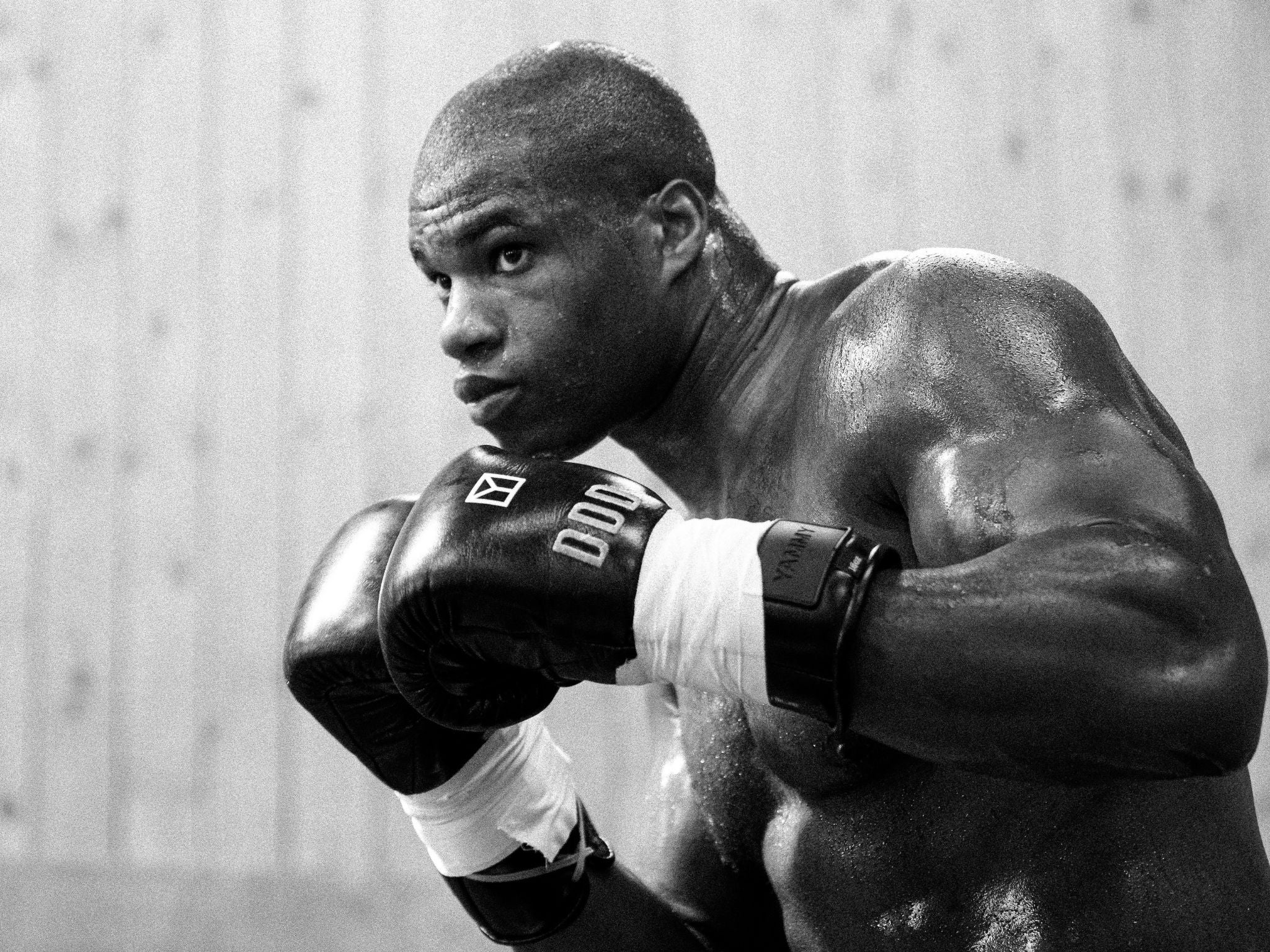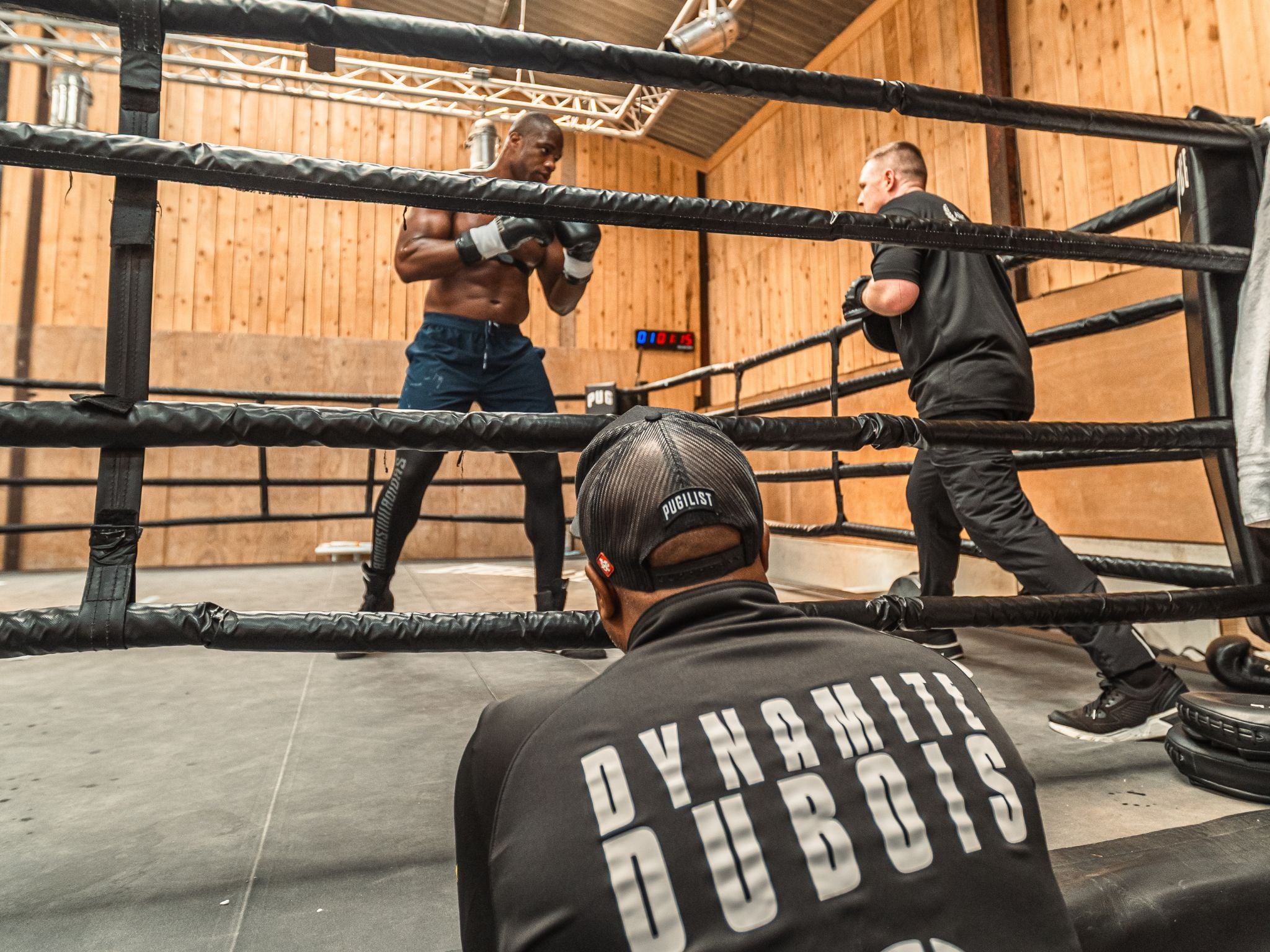Table of Contents
How do you build an undisputed heavyweight world champion? This is the riddle Daniel Dubois’ strength and conditioning coach Samuel Otti has been wrangling with for the last three-and-a-half years.
Otti will be the first to admit he is working with favourable raw materials. Dubois stands at 6ft 5in, weighs upwards of 110kg, and attacks his training with zeal. He also has plenty of skin in the game – before he was born, his father singled him out for boxing greatness, and created an appropriate environment throughout his childhood.
Now, as Dubois prepares to take on Oleksandr Usyk in a winner-takes-all rematch, Otti must work alongside an expanded team of doctors, physiotherapists, nutritionists and coaches to make sure the fighter leaves Wembley Stadium with all four heavyweight belts on July 19.
This is how the pair are preparing, with three phases of training, but just one goal – victory.
Subscribe to DAZN now to watch over 185 fights a year
Stage one – Strength
Professional pre-fight training camps usually last between six and eight weeks. Ahead of the Usyk fight, Dubois and his team committed to 14 weeks. Otti split these 14 weeks into three main phases, each with a different training focus.
“At the beginning of the camp we are focused on his foundation and the fundamentals,” Otti says. “We focus more on his strength because this takes the least energy.”
During this phase, the pair hit classic compound lifts like squats, deadlifts, rows and presses. Over four weeks, they will start with 12-rep sets, then progress the weight to build to tough sets of five.
“The best fighters of all time, like Muhammad Ali, Mike Tyson and Lennox Lewis, they just kept it old school,” says Otti.
“Then we’re implementing the new styles and new methods of training to give us that slight edge. But let’s not fix what’s not broken – keep it simple.”

Stage two – Muscular endurance
After this initial stage, sparring starts, and Otti and Dubois move on to circuit training to develop muscular endurance. The aim is to elevate the fighter’s heart rate above 170bpm, then challenge him to recover quickly from these intense efforts.
Enjoy 185+ fights a year on DAZN, the Global Home of Boxing
Never miss a fight from top promoters. Watch on your devices anywhere, anytime.
ADVERTISEMENT. If you sign up to this service we will earn commission. This revenue helps to fund journalism across The Independent.
Enjoy 185+ fights a year on DAZN, the Global Home of Boxing
Never miss a fight from top promoters. Watch on your devices anywhere, anytime.
ADVERTISEMENT. If you sign up to this service we will earn commission. This revenue helps to fund journalism across The Independent.
“Nothing’s ever written in stone [with these sessions],” Otti says. “But the main focus, when he’s also sparring, is his explosiveness and muscular endurance.
“When it comes to measuring someone’s fitness, everybody’s always keen on cardiovascular endurance, but it’s not just cardiovascular endurance [we need to consider]. You also need muscular endurance as well.
“Both have to work in sync. When your fighter is tired, it’s the mind that tells them they’re tired, but you can’t distinguish whether it’s telling you the muscles are tired or your cardiovascular system is tired, so you’ve got to tap into both.”
Many of the exercises in these circuits would be unrecognisable to even seasoned gym-goers – Otti has created them for Dubois’ specific needs.
“I might have a Swiss ball, and I’ll come to him with the Swiss ball at every single angle and he has to push me with it,” he explains. “I’m going to give him constant pressure for a period of time.
“From there, we might go straight to battle ropes to build muscular endurance around the shoulder, then box jumps, and straight from there to resistance sprints and ball slams.”
Some of the exercises are done for a set amount of time, while others are performed for a target number of reps.
“Then he has a 45-second break,” Otti continues. “Within that break, he can decide to start again whenever he wants, but he has a maximum of 45 seconds to recover.”
The ability to recover is crucial. Anyone can go into the ring swinging for three minutes in isolation, Otti says, but not many people can do it consistently and proficiently for 12 rounds.
Stage three – Tapering
In the final weeks before the event, training is pared back to ensure Dubois arrives fresh, injury free and firing on all cylinders come fight night.
“Now, as the fight is fast approaching, we’re tapering down,” says Otti. “We’re more focused on plyometric training, core [work], activating his fast-twitch muscle fibres, getting his feet to move quicker, [working] his biomotor system and stuff like that.”
This includes exercises such as box jump variations, kettlebell jumps and several single-leg exercises.
Training is also designed to magnify Dubois’ strengths – knockout power, relentless pressure and sound technical foundations, to name a few.
“Some people say to focus on your weaknesses, but real experts always say focus on your strengths,” says Otti. “With Daniel, his strength is not something that he worked on, it’s something that’s God given.
“The other components already exist, it’s just a matter of activating them, and that comes from consistency. We are constantly drilling, because consistency is the mother of mastery.”

The 40 per cent rule
Alongside their gym workouts, Dubois and Otti regularly head to the track or a steep incline to hit sprint sessions.
A favourite Saturday session involves sprinting 120m up the main hill in Greenwich Park, then walking back down and repeating the process. The 27-year-old usually does this roughly 20 times, although this number varies to keep him on his toes.
“Daniel never knows the amount of hill sprints we’re going to do that day,” Otti says. “When we’re doing our hill sprints, that’s when physical fitness goes out the window. At that stage, it’s all about the mind, because the mind often plays tricks on you.”
This is where the “40 per cent rule” – a concept popularised by retired US Navy SEAL David Goggins – comes into play, Otti says.
“It’s a mindset that suggests that when your body tells you you’re tired initially, you’ve only exerted 40 per cent – you have way more in the tank. So when we’re doing the hill sprints and I can see Daniel is tired, I’ll say, ‘Do one more’. Then again, ‘Do one more’.
“Then he starts to build that confidence, build that resilience and build that faith to always trust the recovery. Because by the time he comes back down that hill, he’s going again, and everything is done on the clock. Every single sprint has to be within a set time.”
Against an opponent like Usyk, who historically grows into fights, the ability to keep coming back for more while maintaining composure is critical.
“When you’re in the ring and you’re huffing and puffing, looking at your opponent, and you feel like you’ve got nothing left in the tank, your RAS [reticular activating system] will remind you, ‘OK, I’ve been to this place, let me trust the recovery and I’ll be back,” Otti adds.
“Daniel understands that without me verbally explaining it. He’s not a linguistic learner, he learns through physical activity.”
Recovery protocols
Most people need no excuse to kick back and relax. Dubois, on the other hand, needs reminders to take his foot off the gas every once in a while.
“Daniel is an extraordinary human being,” says Otti. “In a sense, he’s always in camp mode, so he’s constantly training. Daniel doesn’t really do much outside of boxing – he doesn’t really socialise or go out, he is very disciplined. One of his hobbies is to train.
“He’s got a poker face. He’s never going to tell you he’s tired; he’s never gonna tell you he needs a rest; you have to use your intuition [as a coach] because he always wants to work. Sometimes you’ve got to put your foot down and say, ‘No, Daniel, today, have a rest’.”
This is vital for preventing burnout and ensuring Dubois can perform at his best in the ring each day.
The boxer also uses several methods to boost his recovery, beyond getting a good night’s sleep.
“Rest and recovery is key for optimum performance,” Otti continues. “Daniel has a hyperbaric oxygen chamber in the gym now. It repairs muscle tissues, it repairs brain cells, it gets blood flow running properly – loads of amazing factors.
“Then we use cryotherapy with a cryo chamber every so often, and every day after a hard sparring session – it’s always hard – he goes in the ice bath. He has one in his house and in his gym.”
Another factor Dubois’ team has looked to fine-tune ahead of this fight is hydration.
“Hydration is something we paid attention to in the past, but we weren’t as meticulous with it,” Otti explains. “With the help of our new doctor and nutritionist, we’re monitoring it daily, and that could give us the slight edge.”

A team effort
As evident from the mention of a team doctor and nutritionist above, defeating Usyk is not an individual effort for Dubois. He has recruited a larger team than ever before to achieve this goal, including Otti, team doctor Ravi Gill and physiotherapist Tom Kopelman – helicoptered in from Premier League side Tottenham Hotspur – a specialist nutritionist, veteran trainer Don Charles and co-trainer Kieran Farrell.
Family also plays an important role, with Dubois’ father and younger brother Solomon a constant presence around camp.
“Everybody’s working in harmony, and it’s a beautiful thing to see,” says Otti. “Right now, everybody is going back home and working on themselves as well as working on their jobs.
“Daniel is fulfilling his purpose and I’m fulfilling my purpose too. Everything’s coming together – it’s time now [to perform].”

